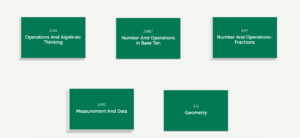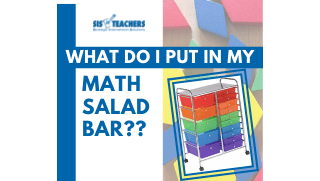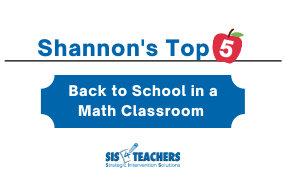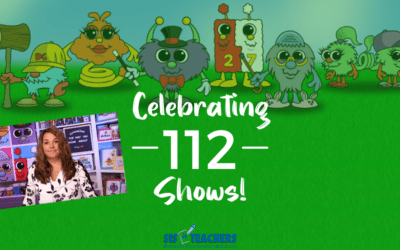Our past few blog posts have highlighted the direction we are taking with some of our schools this spring to really develop the coherence and connectedness of the Common Core standards in the math classroom.

I stumbled upon Achieve the Core based on a recommendation from Pat Baltzley who does our high school and middle school trainings. This amazing (FREE!) resource goes hand-in-hand as we help teachers identify power standards and implement common assessments. It provides free, ready-to-use classroom resources that align to college- and career-ready standards, including the Common Core, and is one you’ll definitely want to bookmark!
There are several areas that we want to call your attention to that we think will be particularly useful:
Classroom Resources
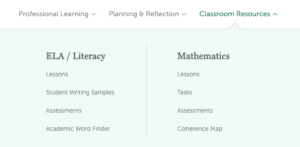
Coherence Map. The website states, quite accurately, that “Mathematics standards are not isolated concepts.” This Coherence Map is a tool that transforms a list of standards into a dynamic, interactive, visual diagram that is designed to illuminate the connections between the standards. It does this not only within a grade level, but it also shows how a standard progresses from grade to grade so you can see the larger connections as well.
Click the “Get Started” buttons until you are prompted to choose a grade level. Then you’ll be able to narrow your focus to a cluster of standards, and finally choose the standard you want to view.
Click on Map Standard to launch the map. The standard you chose is in the middle, and the related standards are arranged, flow-chart style, around it. This shows which standards from the previous grade feed into understanding that particular standard, and which standards build on that standard in subsequent grades. You can also see related standards within the grade level arranged either above or below the selected standard. Finally, the options underneath the description of the standard expand to provide even more resources specific to your chosen standard.
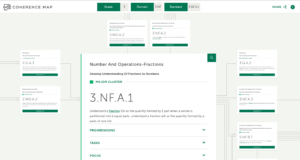
Assessments. For math, these are mini-assessments that reflect the college- and career- ready standards. Select a grade level on the left to see available assessments, which are about three per grade level. As we work with teachers to understand depth of knowledge (DOK) levels, they can use these assessments to practice identifying DOK levels (which we learn to do during our DOK Dash game!) and then use specific DOK level questions with their students.
Each assessment is available to download as a PDF or a Word document, which is fully editable. When you download your chosen assessment, it gives you a wealth of additional information. Not only do you get an answer key (of course!), but the document provides an overview of what the standards are actually assessing, information about how to make shifts required , supports for ELL students, and a list of vocabulary students should know. This resource matches up nicely with the snapshot assessments we talked about in the previous blog!
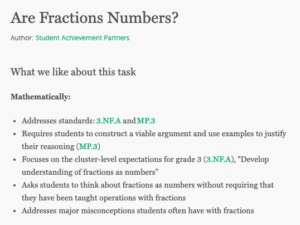 Tasks. Of course we showcase a lot of different websites on our Resource page that provide math tasks, but this is definitely one to add to the list. Achieve the Core organizes their tasks by grade level, and there are several tasks available within each grade level. For each task, you will see the standard addressed, as well as the math practice students will need to solve the task.
Tasks. Of course we showcase a lot of different websites on our Resource page that provide math tasks, but this is definitely one to add to the list. Achieve the Core organizes their tasks by grade level, and there are several tasks available within each grade level. For each task, you will see the standard addressed, as well as the math practice students will need to solve the task.
Lessons. While some of these lessons are designed for specific math programs, any teacher can find useful resources here to apply in their classroom!
Mathematics: Focus By Grade Level
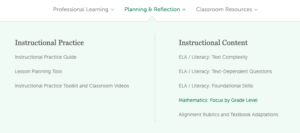 As we’ve talked about before, “mile-wide, inch-deep” coverage of curriculum is not our goal. We want to “narrow and deepen the way time and energy are spent in the math classroom” and this document will help!
As we’ve talked about before, “mile-wide, inch-deep” coverage of curriculum is not our goal. We want to “narrow and deepen the way time and energy are spent in the math classroom” and this document will help!
For some of our districts just beginning the process of identifying their essential standards, they don’t have much data to work with because they haven’t implemented the common assessments yet. They might have data from IOWA or NWEA testing, but that really isn’t enough. This Focus by Grade Level document is the perfect start for these schools! The coding system is helpful as you sort through and prioritize standards to decide which ones are heavy hitters and which ones need a light touch.
![]()
For each grade level, this document lays out the standards in clusters to identify what the site calls the Major Work of the grade level. Those clusters have a green square next to them. A hollow blue square indicates supporting work, and a hollow yellow circle shows standards that are additional work that can engage students in the major work of the grade.
If you select a grade level, you can download a nice two-page document that tells you exactly where to focus a large majority of time in order to meet the expectation of this standard. Not all the content in a given grade is emphasized equally in the standards. Some of these standards will require more of an emphasis based on the depth of the ideas, where your kids are in needing to master it, and the future of the standard, encompassing the demands of college and career readiness.
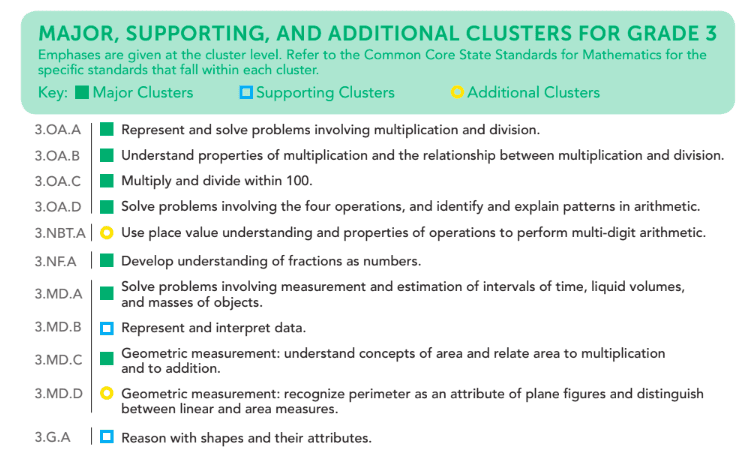
In this example, you can see the standards that are emphasized for grade 3. Many times our 3rd grade teachers struggle to understand why their math programs start with a unit on multiplication right away, but this document shows a major emphasis on multiplication and division in the 3rd grade. If you compare the trajectories from grade to grade, you can really see that there’s less work going on in the other areas, and so we need to be focused on the idea of number sense as it relates to place value, properties of operation addition/subtraction, and so forth.
There are additional, supporting clusters, which include place value (if you go back to the 2nd grade document, place value is a large priority cluster). And then you have some supporting clusters like interpreting data, working with shapes and so forth. It also looks at the requirements for fluencies in that area.
There is great value in looking at the Focus by Grade Level for grades above and below your own grade as it really helps you track a coherent progression of skills and rigor and know where to focus for the maximum impact.


